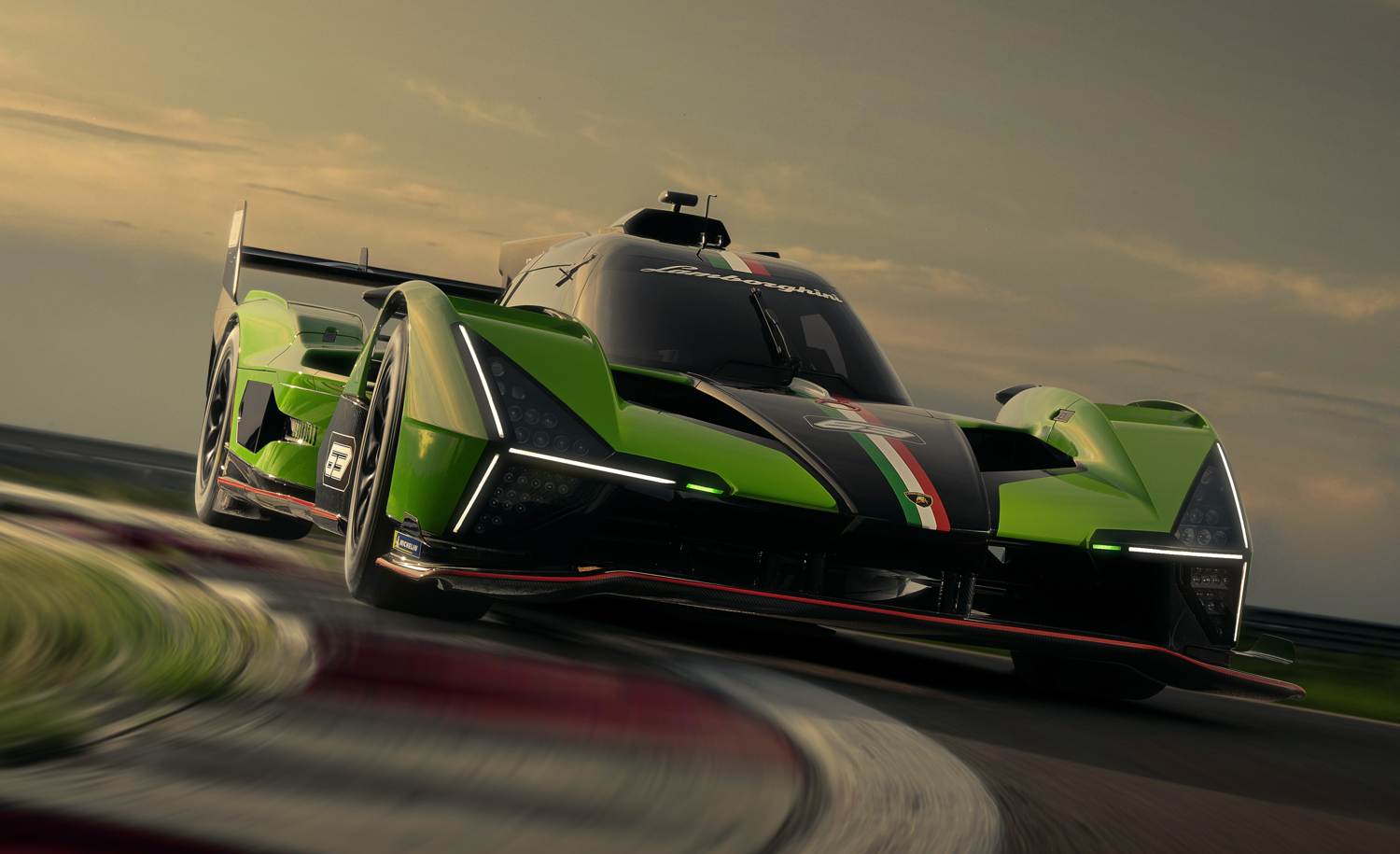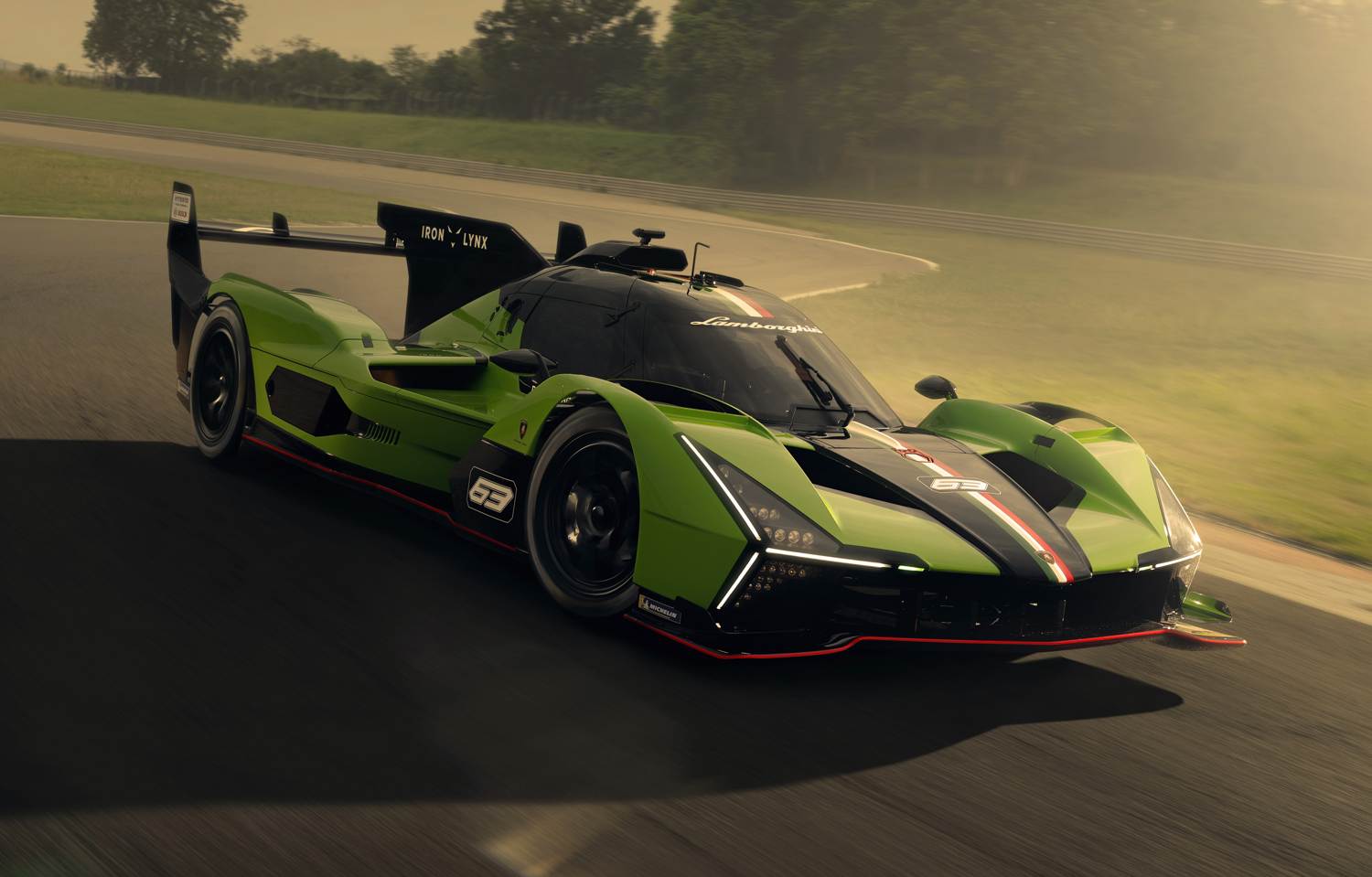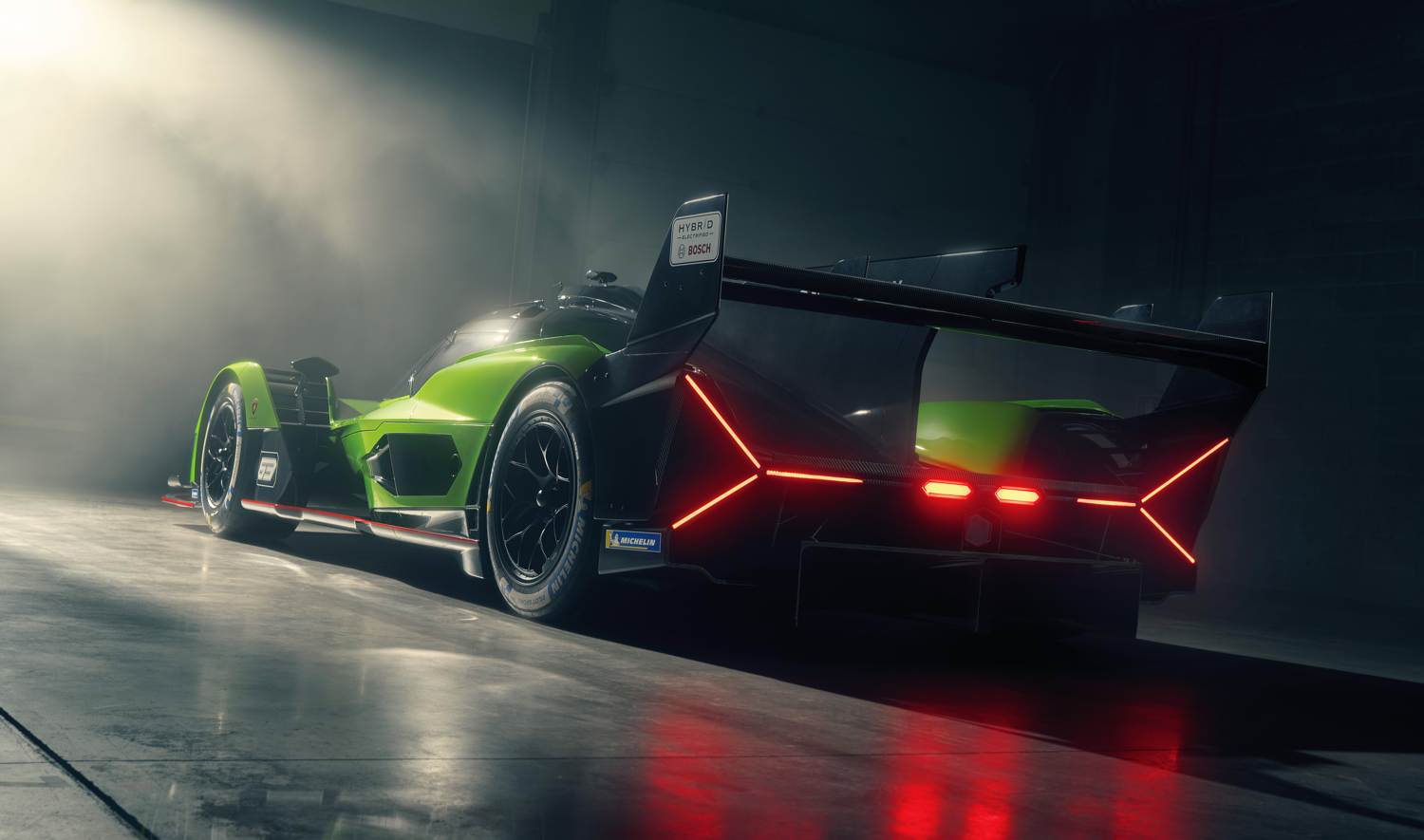Ferrari stunned with its return to Le Mans and now Lamborghini is hoping to rise to the challenge with its new SC63 LMDh racer.
In its 60th anniversary year, Lamborghini has revealed its LMDh racer that will compete in the Hypercar class of the 2024 FIA World Endurance Championship and in the GTP class of the IMSA Sports Car Championship Endurance Cup. The new Lamborghini SC63 will take to the grid at the 24 Hours of Daytona, 12 Hours of Sebring and the 24 Hours of Le Mans.
Lamborghini Squadra Corse will field two SC63 endurance racers, run by Italian team Iron Lynx.
“The SC63 is the most advanced racing car ever produced by Lamborghini and it follows our roadmap ‘Direzione Cor Tauri’ laid out by the brand for the electrification of our product range,” said Stephan Winkelmann, Lamborghini Chairman and CEO. “The opportunity to compete in some of the biggest endurance races in the world with a hybrid prototype fits with our vision for the future of high-performance mobility, as demonstrated for road legal cars with the launch of the Revuelto. The SC63 LMDh is the step into the highest echelons and into the future of motorsports for our Squadra Corse.”
The SC63 is powered by a new 3.8-litre twin-turbocharged V8 that uses a ‘cold V’ layout with the turbochargers on the outside of the engine in what was once the traditional configuration for such engines. Lamborghini has chosen to move away from the ‘hot V’ configuration that has become popular in high-performance road cars for the last decade or so, as the traditional layout has benefits in terms of the aerodynamic efficiency of the bodywork, ease of repair in the heat of the battle and offers a lower centre of gravity.
While the engine is bespoke to the Lamborghini SC63, the LMDh category mandates a standard gearbox, battery, motor generator unit (MGU) and Bosch control unit. As per the regulations, total system output is pegged at 500kW.
The SC63’s body is designed by the brand’s Centro Stile department in conjunction with monocoque supplier Ligier.
“We wanted to create a car that is immediately recognisable as a Lamborghini,” said Mitja Borkert, Lamborghini’s Head of Design at Centro Stile. “The main recognition of the front and rear of the SC63 is driven by the y-shaped signature light. The size of the cabin and the main character of the car is driven by the sporting rules, but we have also implemented our own brand styling cues throughout the car. Integrated into the side panel of the body you can see a NACA duct that was inspired by the air intake of the Countach. When you look at the rear wheel arch, we gave the impression of acceleration towards the front, and this relates to the wheel arch design language of Lamborghini that can also been seen on the Revuelto.”
For the 2024 season, one SC63 will compete in the full FIA World Endurance Championship, while the second car will race in the North American Endurance Championship races of the IMSA series. The driver line-up for the 2024 season includes Lamborghini factory drivers Mirko Bortolotti and Andrea Caldarelli, plus former Formula 1 drivers Daniil Kvyat and Romain Grosjean. The remainder of the driver line-up will be announced later this year.
Prior to the reveal of the SC63, we had the opportunity to sit down with Lamborghini’s chief technical officer, Rouven Mohr.
Q: Can we start with an overview of the programme and why Lamborghini has chosen to compete with an LMDh car?
“We go racing for the thrill of victory but motorsport to us is also a valuable and very demanding proving ground for our technology. Our new LMDh car, is an exciting challenge from both a technical as well as from a human stand point. The development of our internal combustion engine, aerodynamically efficient bodywork and the whole technical package is a process that has pushed us to constantly raise our standards. The Lamborghini SC63 is our first racing hybrid and it features a brand new V8 twin-turbo engine that has been specifically developed and engineered for this project. By regulation, the maximum power output is 680cv [500kW]. As the maximum power output is regulated, our development team of engineers have been focused on increasing the efficiency, driveability and performance strategies of the entire power unit including the hybrid system.
As we develop our LMDh car, we are also mindful of the technology transfer opportunities in the future. We will take our learning experiences in motorsport and apply them, where possible to future production cars.
How motivating is Ferrari’s recent win at Le Mans?
First of all, I have to say congratulations to our colleagues because as a motorsport fan, it’s always interesting if a brand like Ferrari that has this marvellous racing history coming back and winning at the first step, so this is for sure a very huge success.
If you ask me specifically if this is motivating us more, I would not say that because we are already motivated independent of the competitor. It’s clear that we have already decided to go there because the level of competition is like high, like never before. I mean at the moment, if you look at Le Mans especially from next year, the level of competition in LMDh and also in LMH category, at least I cannot remember if there was such a competition in the race before. Therefore, we decided to look for the competition because this is part of our ambition, we want to compete with the best of the automotive industry, so therefore we are always motivated. I would not say that this specific victory has now influenced us. Because if it’s someone else who has won Le Mans, it’s clear that it’s the highest level of competition and all the other manufacturers have also huge competence.
There are so many competent teams and the challenge is so tough, so for us the ambition is to compete with the best in the world.
Are you happy with the racing and competition that the new regulations have been producing? What could be improved?
To be honest, for me, it’s a little bit too early. We are still in the first year where the LMDh and LMH are competing in the same races. If I now look at Le Mans, for sure there are some points of discussion. I will not comment too much as we are not involved and usually I only try to speak about Lamborghini topics and not competitors.
But looking from a fan perspective, we have some question marks. But it’s also quite natural, so I’m still absolutely convinced that if we give it a little bit more time, balancing, seeing different races, that there will be a good way.
From a fan perspective, I’m very happy about the fact that a lot of very competitive manufacturers are competing in the series. For me, Le Mans this year was again one of the highlights, I mean I was only looking it as a fan and to see this kind of racing. It’s a revival of endurance racing.
By the way you see also the shows, in the beginning of the year, the Daytona 24 Hours, it’s a very cool show. So, I think we are on the right way though there are still some points to improve. But it’s clear as we are speaking that this is only the first year and it’s highly complex, to make it balance the performance of these kind of different cars, so let’s give the organisers a little bit of time.
The new engine has the turbochargers on the outside of the motor rather than the recent trend of a hot-V configuration. Why the change in philosophy and is this something that will translate back to road cars?
Our race car engine has the turbochargers on the outside of the V and usually for the street car it follows the hot-V configuration because of the packaging. In the race car, you have a decrease of freedom as you have more concentration on the centre of gravity and the cooling concept is different, the aero concept is another planet, so therefore, if you want to have the best in both, for me it’s hard to bring it together. For sure you can discuss if some specific technical solution might be similar but in our case it is not the case. It’s an engine that is completely designed only for this LMDh project.







